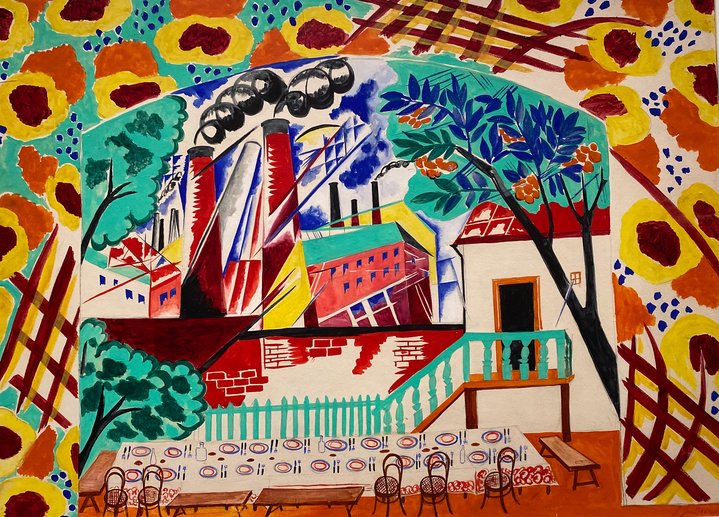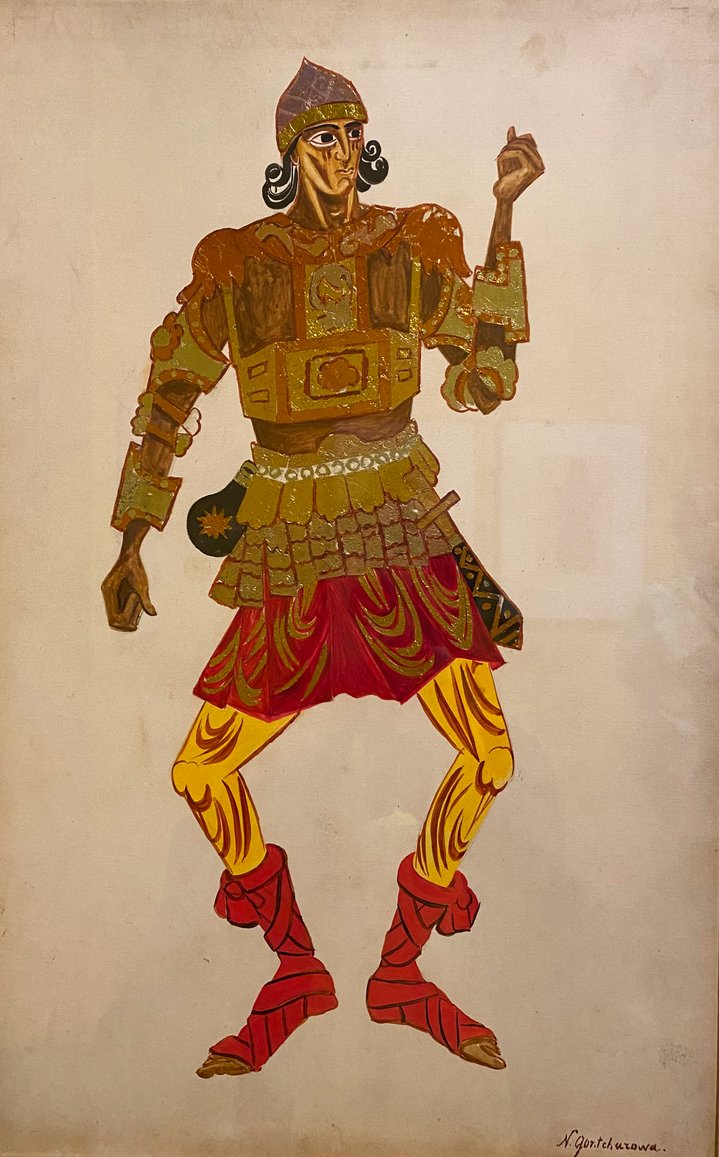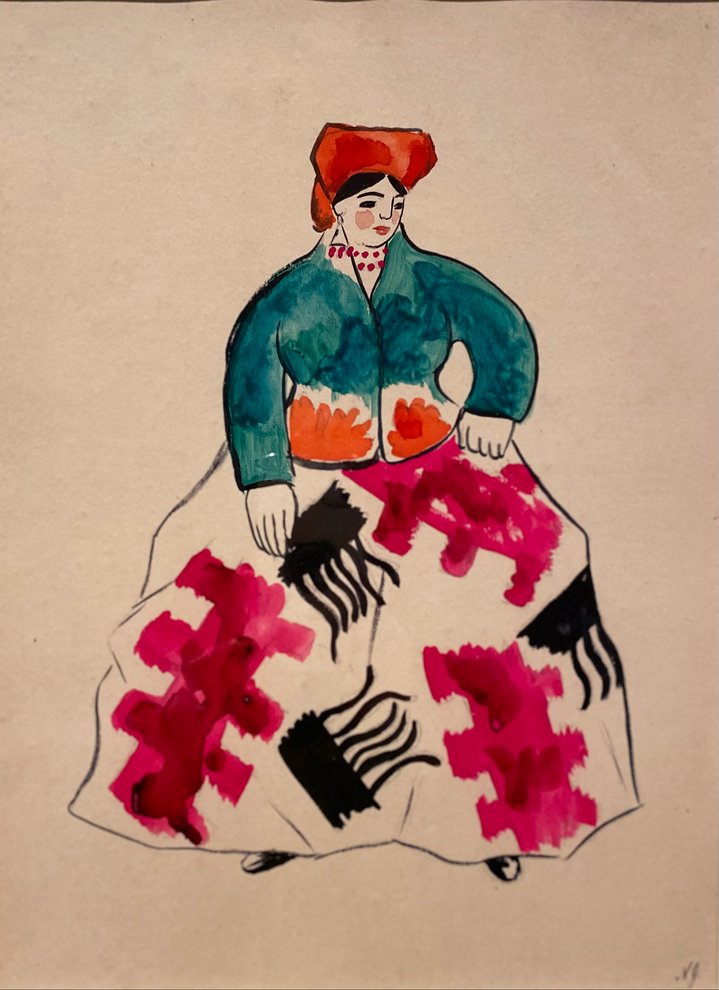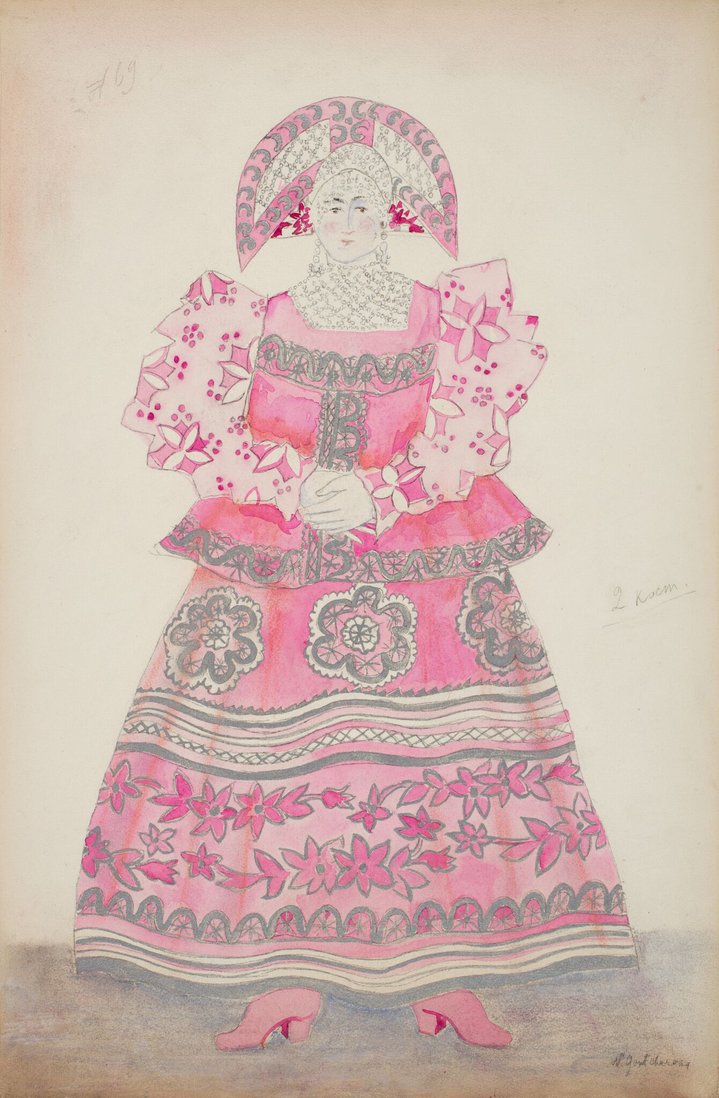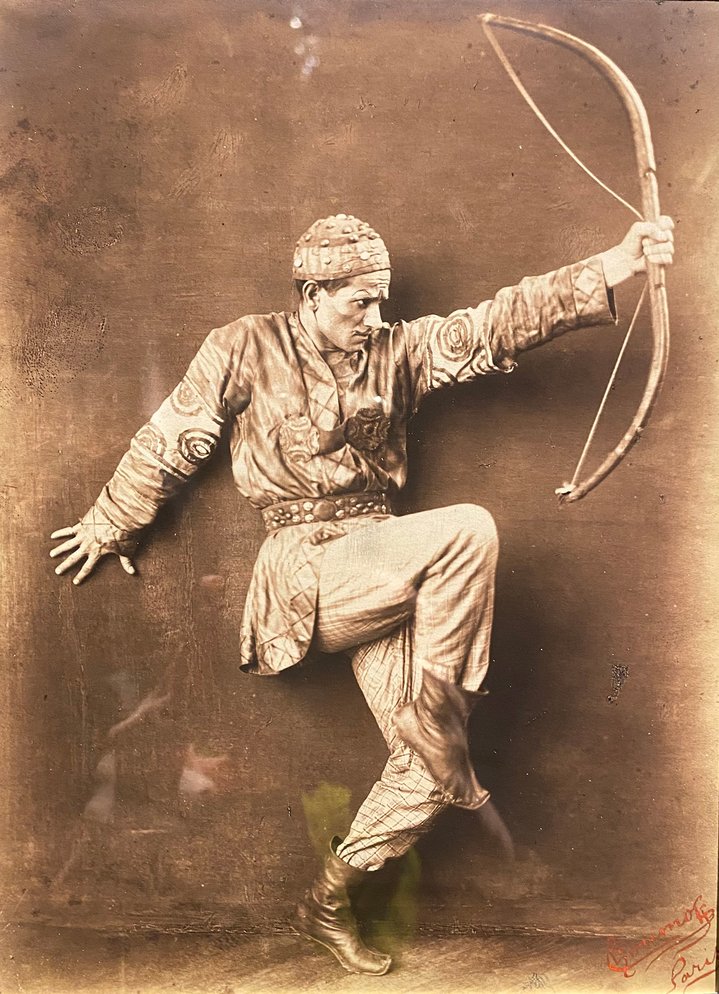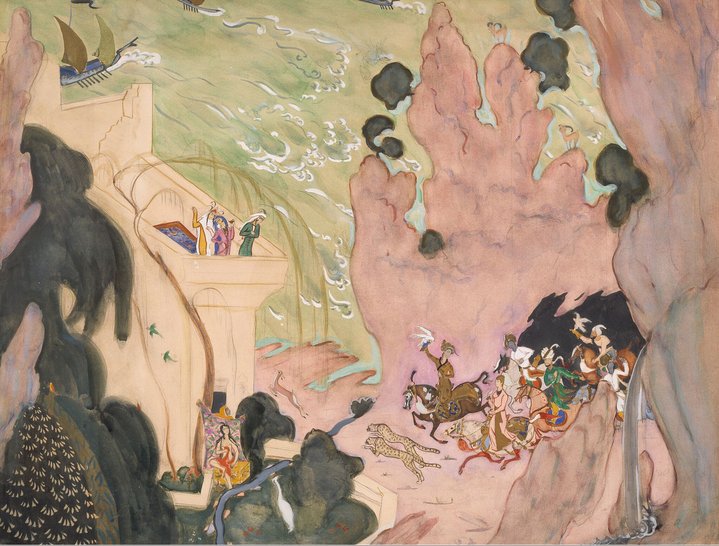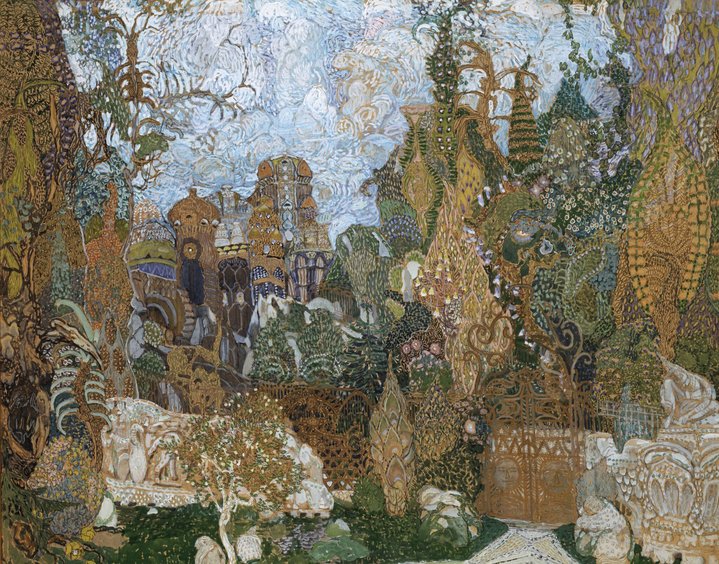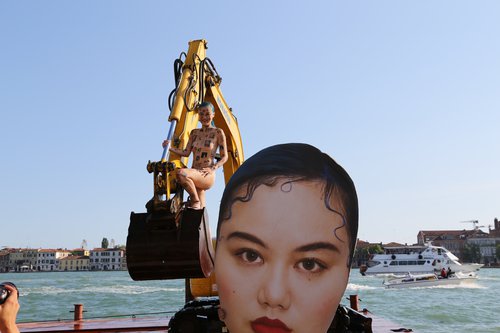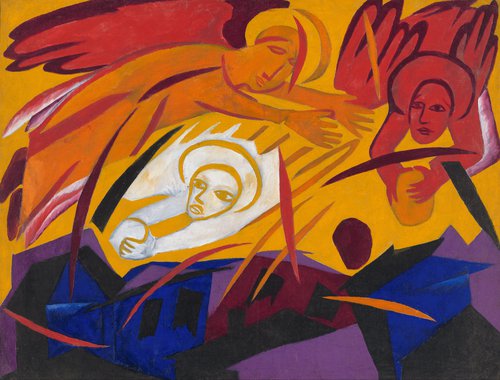The Sergei Diaghilev exhibition is an anniversary without a hero

Scene from 'Russian Fairy Tales', The Maids of the Swan Princess, 1918. Sergei Diaghilev's Ballet Russe
The State Tretyakov Gallery in Moscow has opened an exhibition called ‘Sergei Diaghilev. The Dress Rehearsal’ which is timed to coincide with the 150th anniversary of the entrepreneur's birth, yet is is not about the great man at all.
Everything here is in the service of the god of ballet. The iconic ballets staged by Diaghilev's company, such as Le Sacre du Printemps, the Midnight Sun, the Russian Fairy Tales, Le Chout, Le Dieu Bleu and Schéhérazade.The exhibition spaceis filled to the brim with sketches for the original performances - including those which were never realised - and on the surface it is all formally dedicated to Sergei Diaghilev (1872–1929). Yet in reality, we do not see Diaghilev himself at all in this exhibition, a man who deserved Cocteau's definition as a ‘sacred monster, a Russian prince who was only satisfied with life if miracles occured in it’. There are no details taken from his curious and scandalous biography, or about the exploits and failures of this genius who literally changed the world stage forever.
He achieved this remarkable feat a century ago, but no one has ever highlighted Diaghilev's own personal fame. It istherefore no coincidence that practically all that was left over from his productions, principally the original ballet costumes, was scattered around the globe when sold at auction by Sotheby’s between 1967–1973. As a result, this legacy today is spread mainly among three major museum collections, the National Gallery of Australia, the Dansmuseet in Stockholm and the Victoria and Albert Museum in the UK. The USSR did not lay claim to anything at that time, but now some treasures have found their way to Moscow by roundabout means, thanks to Olga Mazure, an independent researcher and collector living in London.
Only the first room - and then only in passing – refers directly to Diaghilev the man. His persona seems to be dissolved into a dozen or so multilingual posters printed on thin paper, into a folio on ballet, into hastily sketched portraits by Mikhail Larionov (1881–1964) and photographs, where he is usually shown in the company of comrades-in-arms, lovers and friends, who now and again turned into his enemies. Only here are the rules of the delicate genre of ‘in memoriam’observed. And then you come a wonderful ‘objet d'art’ on display: black satin pointe shoes which once belonged toTamara Karsavina which she danced in for her role as Colombine in the ballet ‘Carnival’, created by Leon Bakst (1866–1924) for the staging by George Balanchine and this defines the main thrust of the show.
For it is not at all about Diaghilev: it is an exhibition to celebrate the recent acquisitions made by the Tretyakov Gallery. There are mainly costumes created for the performances of the ‘Russian Seasons’; sketches not only by the likes of Natalia Goncharova (1881–1962) and Leon Bakst (their works are the first to be seen) but also by Alexander Golovin (1863–1930), Nicholas Roerich (1874–1947) and Henri Matisse (1869–1954). A white satin outfit, which looks a bit like a ‘space-suit’, embroidered with blue clouds, was designed by Matisse in 1920 for Igor Stravinsky's ballet, ‘The Song of the Nightingale’. You see the costume of a Chinese lady-in-waiting, as the ballet was composed around the theme of Hans Christian Andersen's ‘The Nightingale’. Like the other new exhibits on show, which comprise only twenty costumes in total, this one was bought using sponsorship funds in 2019-2021. There was another exhibition planned for this autumn in which they were due to be included exploring the influence of Russian art on global fashion trends. However, after the events of February 2022, the curators Irina Shumanova and Evgenia Ilyukhina had to quickly come up with something to replace it
The white, metallic paint, created in 1926 by Goncharova for her striking costumes for Stravinsky's ‘The Firebird’ and those that Golovin designed for the same ballet in 1910, and the colourful dress of the main heroine of Balakirev's‘Tamara’, designed by Bakst in 1912, and his costumes for Reynaldo Ana's ‘Le Dieu Bleu’ are scattered along the museum’s enfilade, in the same place which saw the major retrospective by Mikhail Larionov (1881–1964) a few years ago. And many of Larionov's sketches have been moved here in the interim, along with those by Valentin Serov (1865–1911), and the already mentioned Golovin, Goncharova and Bakst. Costumes of Diaghilev’s stars stand out among the sketches like a prima ballerina in front of the corps de ballet. However ones which were stitched after Diaghilev died in 1929 in Venice, made for the dancers of the Russian Ballet of Monte Carlo or the Colonel de Basil Company are shown on pedestals on an equal footing with them.
These late productions can be experienced through surviving archival film footage which is shown in the exhibition alongside vintage photographs. The latter were bequeathed to the Tretyakov Gallery by Alexandra Tomilina-Larionova, Larionov’s second wife, along with a huge quantity of sketches by Larionov and Goncharova. The bequest is in fact so extensive that after the forthcoming reconstruction of the New Tretyakov Gallery it will be renamed the ‘Sergei Diaghilev Hall’. And due to the size of the collection, the graphic works on show here in the future will be on constant rotation. That is, with the exception of one item that came into the museum together with the costumes and is now being restored: a spectacular, monumental 10x23m backdrop for the Polovtsian Dances, painted by Nicholas Roerich for the performance at the Theatre Châtelet in Paris. Once it goes on display there it is to stay on public view in perpetuity.
Diaghilev. The Dress Rehearsal
Moscow, Russia
October 4, 2022 – February 5, 2023






